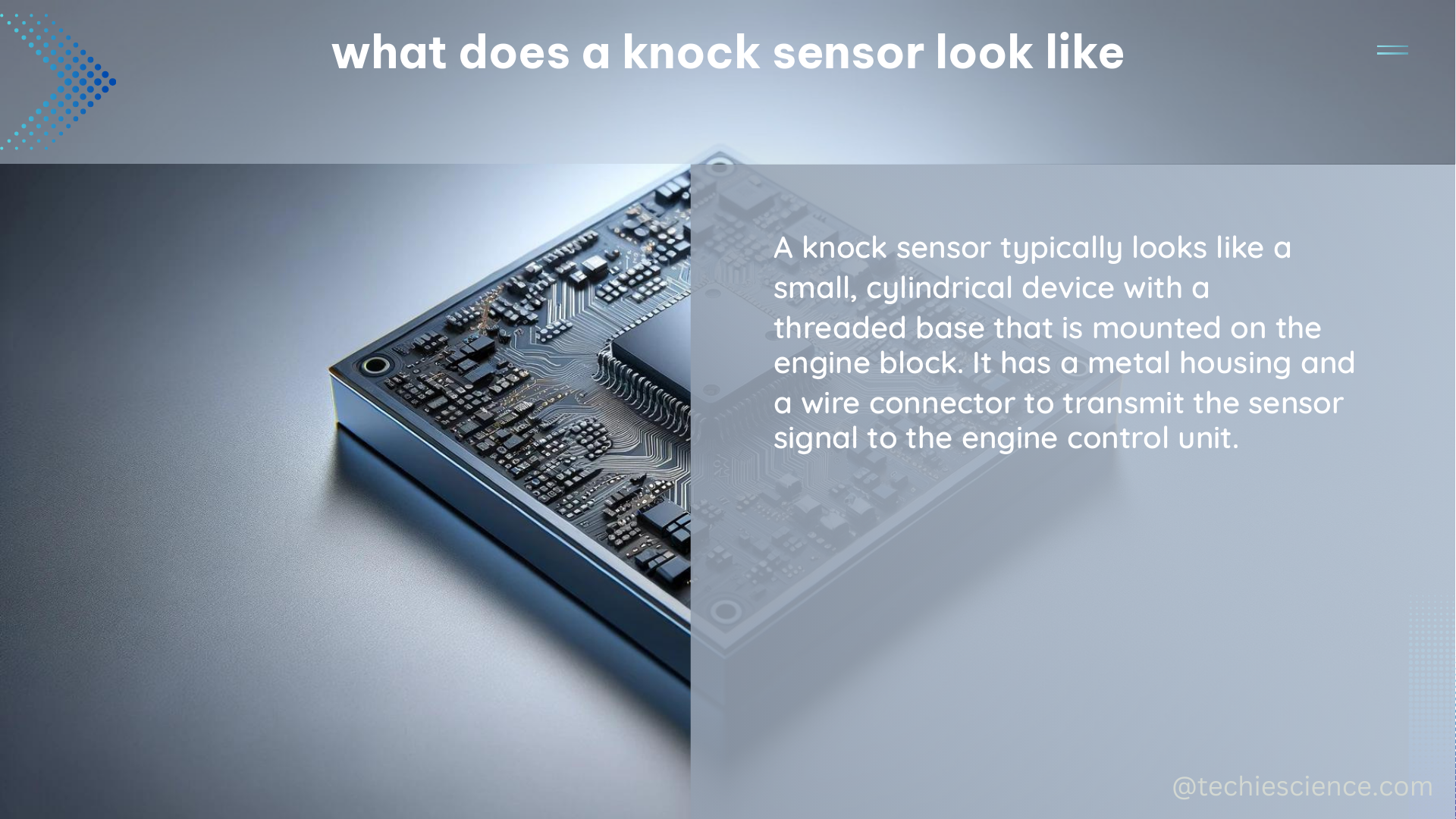A knock sensor, also known as a knocking sensor or piston slap sensor, is a critical component in internal combustion engines that plays a vital role in detecting and preventing engine knocking or detonation. This small, yet essential device is typically located near the engine block and cylinder head, where it continuously monitors the vibrations and frequencies produced by the engine.
Anatomy of a Knock Sensor
The typical knock sensor has a cylindrical shape with a threaded end that screws directly into the engine block. At the opposite end, it features an electrical connector that links the sensor to the engine control unit (ECU). The heart of the knock sensor is a piezoelectric crystal, which generates a voltage signal when subjected to vibrations.
Dimensions and Specifications
- Size: Knock sensors are generally small, measuring around 20-30 mm in length and 10-15 mm in diameter.
- Threads: The threaded end of the sensor is typically M10 or M12, allowing it to be securely mounted into the engine block.
- Frequency Response: Knock sensors are designed to have a frequency response range of a few hundred Hertz (Hz) up to several kilohertz (kHz), enabling them to detect a wide range of engine vibrations.
- Vibration Sensitivity: These sensors can detect vibrations with amplitudes as low as a few millimeters per second (mm/s), ensuring they can pick up even the slightest engine knocking.
- Temperature Rating: Knock sensors are rated to withstand maximum temperatures of around 200 degrees Celsius (°C), allowing them to function reliably in the high-heat environment of the engine compartment.
- Sensitivity: Knock sensors typically have a sensitivity range of 10-50 millivolts per g-force (mV/g), where ‘g’ represents the acceleration due to gravity.
Knock Sensor Placement and Accessibility

The location of the knock sensor is crucial for its effective operation. It is typically positioned near the engine block, often in close proximity to the cylinder head. This strategic placement allows the sensor to accurately detect the vibrations and frequencies generated by the engine’s combustion process.
To access the knock sensor for inspection, testing, or replacement, you will need to locate it within the engine compartment. This may require some disassembly, as the sensor is often tucked away in a tight space. You may need to use specialized tools, such as a socket wrench or a knock sensor removal tool, to safely remove the sensor from the engine block.
Knock Sensor Diagnosis and Replacement
When diagnosing issues with a knock sensor, it is essential to have the proper tools and equipment. A multimeter or an oscilloscope can be used to test the sensor’s electrical continuity and frequency response. Additionally, you may need to consult the vehicle manufacturer’s specifications to ensure that the replacement sensor meets the required standards.
Knock Sensor Replacement Procedure
- Locate the knock sensor within the engine compartment.
- Disconnect the electrical connector from the sensor.
- Use a socket wrench or a specialized tool to unscrew the sensor from the engine block.
- Inspect the sensor for any signs of damage or wear, such as cracks, corrosion, or physical deformation.
- If the sensor is faulty, replace it with a new one that meets the manufacturer’s specifications.
- Apply a small amount of thread sealant or anti-seize compound to the threads of the new sensor.
- Carefully screw the new sensor into the engine block, ensuring that it is tightened securely.
- Reconnect the electrical connector and ensure a proper connection.
- Clear any diagnostic trouble codes and test the system to ensure proper operation.
Conclusion
The knock sensor is a crucial component in modern internal combustion engines, responsible for detecting and preventing engine knocking or detonation. Understanding the anatomy, specifications, and replacement procedures of a knock sensor is essential for maintaining the performance and longevity of your vehicle’s engine. By following the guidelines outlined in this comprehensive guide, you can confidently diagnose and address any issues related to the knock sensor in your vehicle.
References:

The lambdageeks.com Core SME Team is a group of experienced subject matter experts from diverse scientific and technical fields including Physics, Chemistry, Technology,Electronics & Electrical Engineering, Automotive, Mechanical Engineering. Our team collaborates to create high-quality, well-researched articles on a wide range of science and technology topics for the lambdageeks.com website.
All Our Senior SME are having more than 7 Years of experience in the respective fields . They are either Working Industry Professionals or assocaited With different Universities. Refer Our Authors Page to get to know About our Core SMEs.